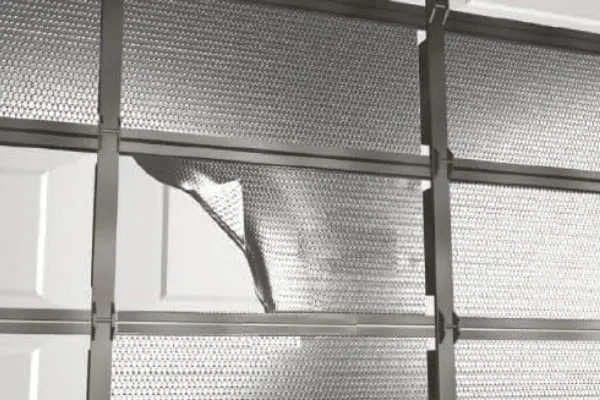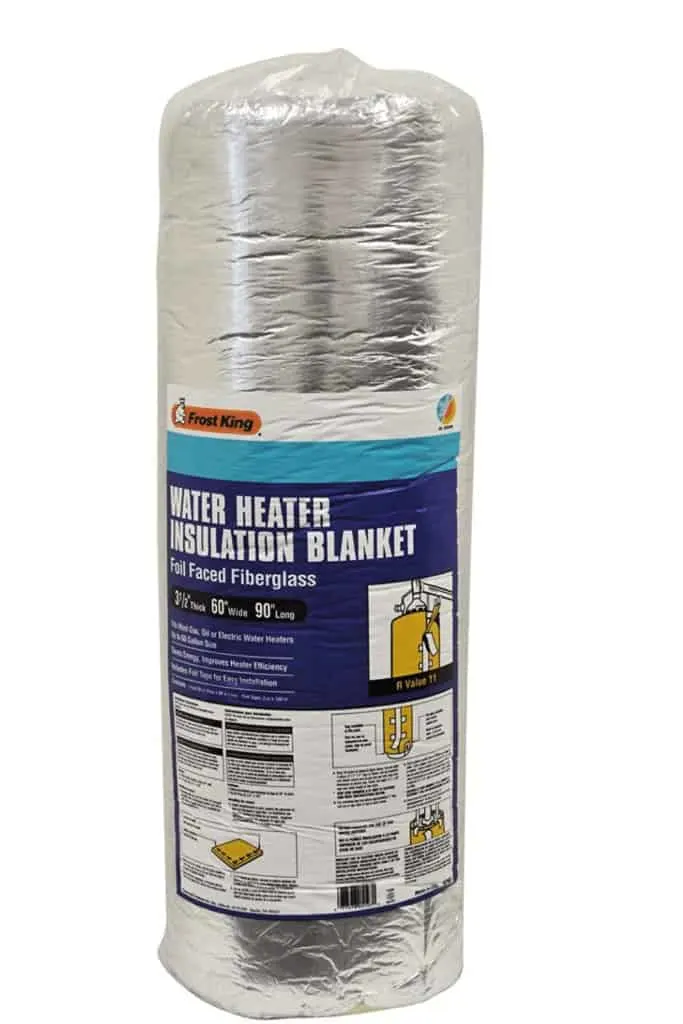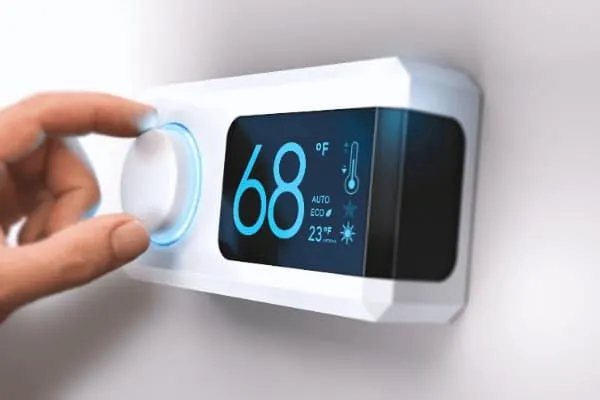When temperatures plummet to the teens and cold winds rattle the doors and windows, it becomes more difficult to heat the rooms in your house. You could crank up the thermostat, but you might get hit with an unpleasant spike in your heating bill if you do. There are many cheap ways to heat a room and get your house comfy and cozy without spending an arm and a leg.
Here are some of the best ways to keep your house warm in the winter months and save money on your energy heating bills.

Affiliate disclosure: This post may contain affiliate links, which means we may receive a commission if you click a link and purchase something that we have recommended. Please read our disclaimer for more details.
Where to Start: Which Cheap Ways to Heat a Room Are Best for You?
Your approach to heating the rooms in your house will depend largely on your living situation.
- What kind of home do you live in? An apartment? A duplex? A house?
- Do you rent or own?
- How old is the home?
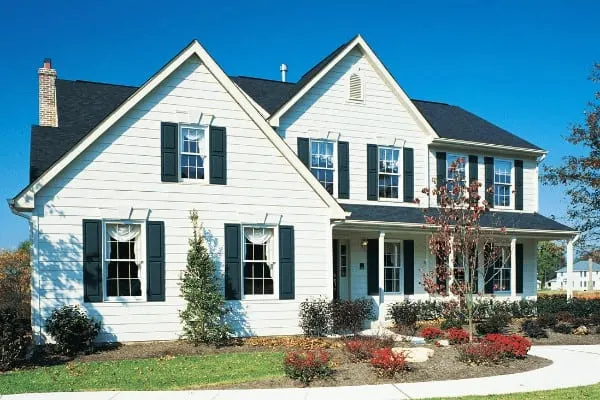
The answers to these questions will help determine the most appropriate and cheapest way to heat your cold room. If you own a freestanding house, you have the ability to make renovations that will not only make your whole house more energy efficient but will also reduce your heating costs.
Of course, these renovations are going to cost more upfront than some of the other measures we’ll look at, but they will also have bigger long-term impacts on your energy savings. This means you get a warmer house over a longer period of time with lower ongoing energy costs.
However, if you rent a house or live in an apartment or townhouse, you’re not going to have as much control over the overall energy efficiency of your home.
On the one hand, this means you don’t have to worry about the expense (and headache!) of renovating and you can jump right to the cheaper and quicker methods of heating a room up.
On the other hand, if the home is experiencing high rates of heat loss, you might find that keeping your home warm is a constant challenge. If this is the case, it could be worth speaking to your landlord, property manager, or strata about some larger-scale energy efficiency measures that can be taken.
Prepare Your House
In case you do own a freestanding house, let’s first look at some basic renovations you can do to increase its energy efficiency. We’ll start here not because it’s the cheapest or easiest (it isn’t), but because it will have the greatest overall impact.
If you are renting or living in a strata, you may want to skip this section and move straight to Cheap Ways to Heat a Room Without Renovating.
Before you invest time and money trying to increase the temperature inside your house, you need to address the issue of heat loss. If you don’t have a tight building envelope, all the work you do to heat your rooms will be wasted.
How well is the heat staying inside once you generate it? If it’s quickly escaping through the roof, windows, or other cracks or holes around your house, you need to address this issue first.
Insulation
Long before that first cold day, you should install adequate insulation throughout your house, starting with the attic. Because warm air rises, if your attic is not properly insulated, you’re going to lose a lot of heat that way.
Depending on which type of insulation you use, you may be able to do it yourself or you may need to hire a contractor.
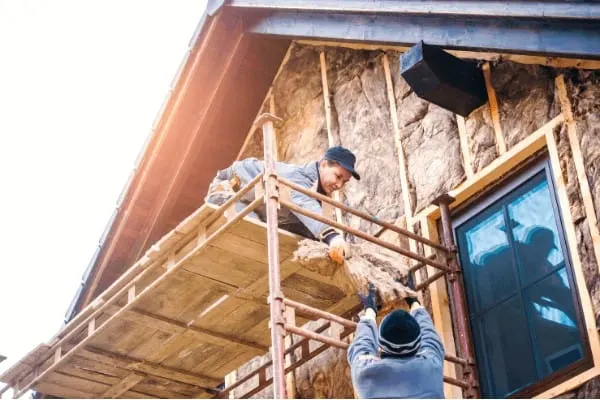
Unfortunately, insulating an attic is not cheap. According to Home Advisor, it can cost between $1.50 and $3.50 per square foot. However, if this is something you haven’t done yet, it’s worth the upfront costs as it will make all your other energy efficiency measures much more successful.
Other Areas to Insulate
Cathedral ceilings
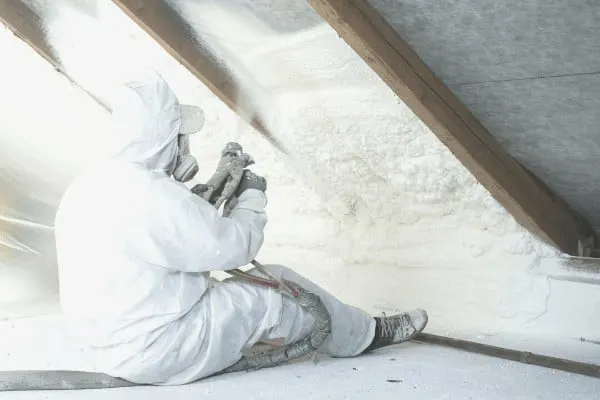
The best time to insulate your cathedral ceiling is during a roof replacement. If you want to assess and insulate your vaulted ceiling at another time, it’s best to call in a professional and have them check it out.
Exterior walls

Walls can account for up to twenty percent of your home’s heat loss, so it’s important to ensure they’re properly insulated. Unfortunately, adding insulation to an external wall after construction is a major renovation project and won’t be cheap.
If you are residing in your house, that would be a good time to insulate from the outside. Here is a full guide to insulating walls.
Basements and floors over unheated or open spaces and crawl spaces
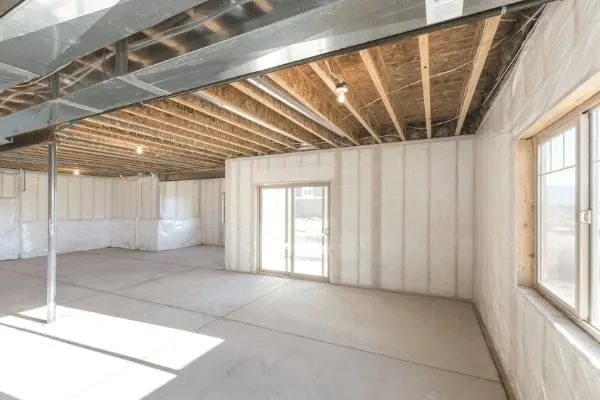
An uninsulated basement can be another source of heat loss and potential moisture problems in your home. Adding insulation will not only make your home more energy-efficient but could also increase your living space.
Crawl spaces can also contribute to heating inefficiencies. Learn how to insulate your crawl space here.
Ductwork
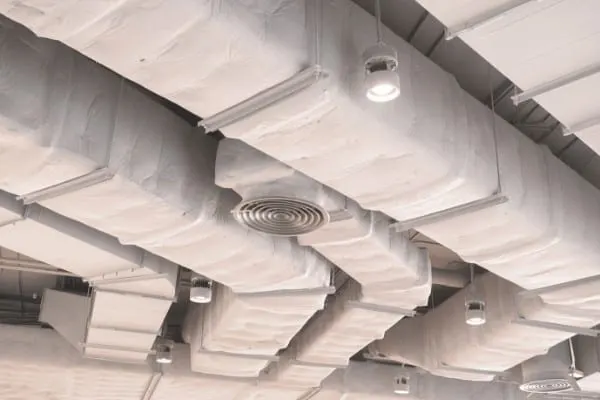
Older duct systems may have design inefficiencies and could be leaking hot air into unused areas of your home, resulting in you paying for heat that you’re not deriving any benefit from. Have a contractor evaluate your ducts for inefficiencies and insulate them with heat-approved tape.
Garage walls
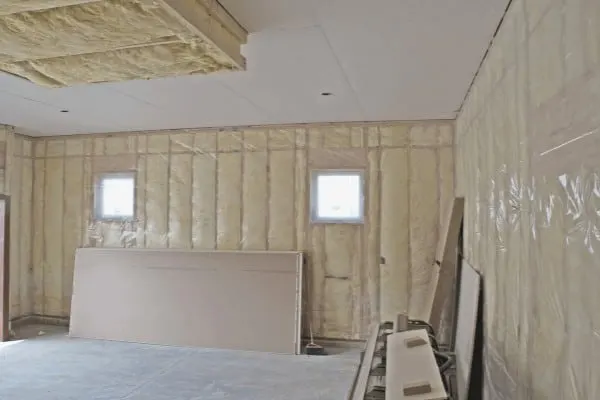
You can insulate unfinished garage walls with batt insulation. For finished walls, you will either need to remove the drywall to install batt insulation or cut holes in the drywall and use blown-in insulation.
During this process, you’ll want to make sure you fill any gaps or holes in the walls before installing the insulation.
Garage doors
Insulating your garage doors is an easier project you can probably tackle on your own. A garage door insulation kit can help speed up the process.
Hot water tank
If you have an older hot water tank, it may be losing heat through its walls if it’s not properly insulated. This is an easy fix that could definitely save you money on your heating bill. Grab a hot water tank insulation blanket for about $20 and check this one off the list.
Behind electrical outlets
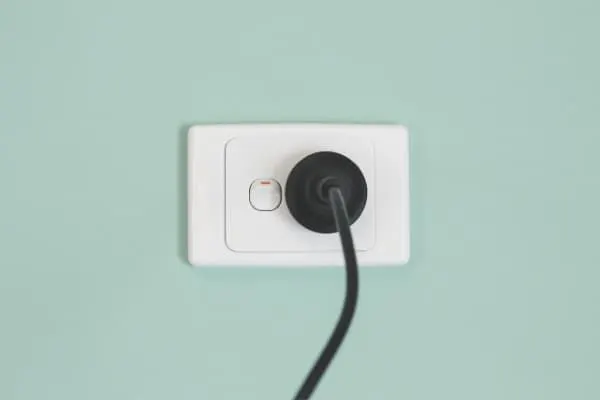
Place your hand close to electrical outlets and light switches to check for cold air. If you feel any, remove the plate and stuff the hole with insulation, being careful not to touch the hot wires. Replace the covering and check again for cold air.
Cheap Ways to Heat a Room without Renovating
But let’s say you are not in a position to improve the insulation in your home. You probably want to know how to keep a poorly insulated house warm.
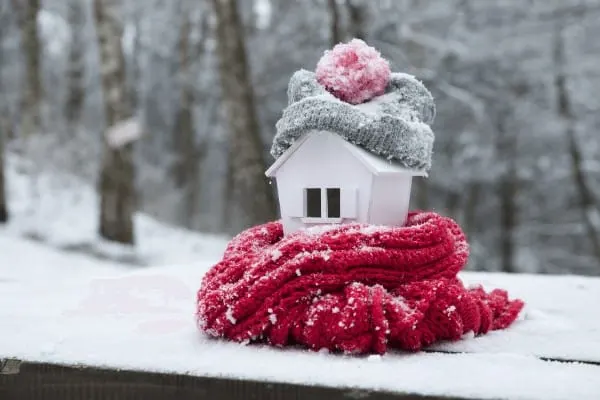
Not to worry! There are many economical ways to heat a room without making a major investment in insulation or updating your central heating system.
Here are some small changes you can make around your house
2. Reverse the Direction of Your Fans
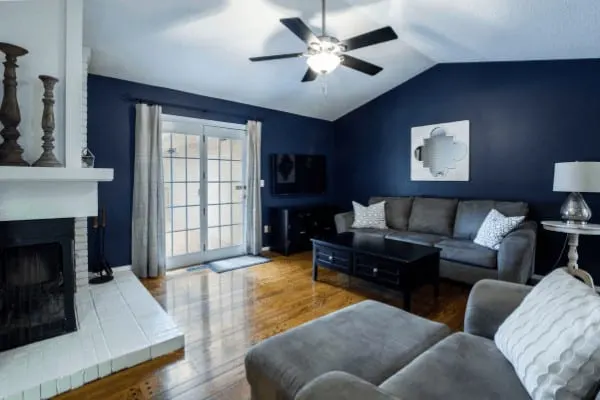
Here’s an efficient way to improve the temperature in a small space equipped with an overhead fan.
Because warm air rises, we want to find ways to capture and use that heated air. If you reverse the motor of your ceiling fan and operate it at a low speed in a clockwise direction, you can actually push that warm air down into the occupied space.
If saving money is a key motivator for you, be sure to only operate the fan when the room is occupied so you’re not adding an additional cost to your heating bill by running a fan in an empty room.
3. Reduce Air Leakage by Sealing around Doors and Windows
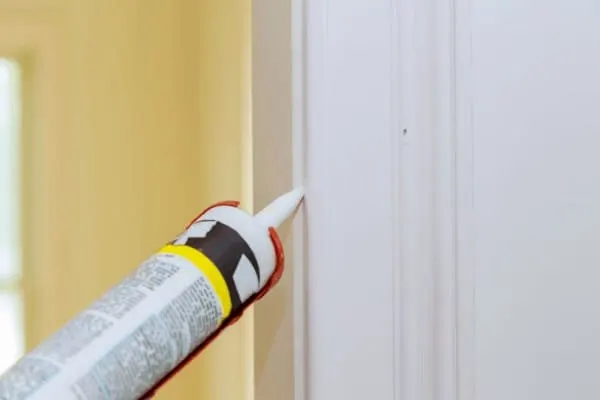
Lots of drafts can get in around the tops and bottoms of doors, as well as the edges of window sashes. Using an adhesive weather stripping product to close these gaps can substantially minimize heat loss.
You’ll also want to check that the caulking around your windowpanes is sufficient. Replace caulking around windowpanes when it becomes dry and shrunken.
A lot of cold air can seep in around each pane and for less than five dollars, you can grab a tube of silicone sealant to keep the warm air in and the moisture out.
You can install draft stoppers at the bottom of your interior and exterior doors if you notice any cool air coming in through them.
Alternatively, for a free option, you can fold a towel and lay it at the base of each closet door and those that lead outside or into an unused room.
4. Maximize Window Efficiency
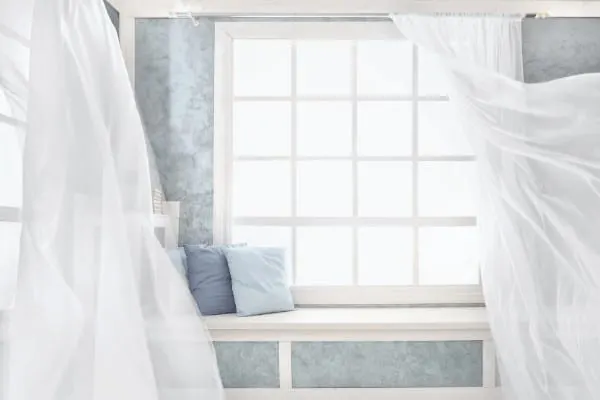
Open the shades, blinds, and curtains of any south-facing windows when the sun is shining in a room to warm it up, and then close them when the sun has moved. If possible, pick up some insulated curtains to enhance the energy-saving effect.
Keep closet and cupboard doors shut and close the vents and doors of unused rooms; it takes only a few minutes to warm them up if needed.
You’ll also want to protect your windows from heat loss by covering them with some kind of plastic. DIY solutions include bubble wrap and shrink wrap adhered with a few spritzes of water from a spray bottle, or you can spring for a window kit if you’re looking for something a little more official.
5. Invest in a Programmable Thermostat
Upgrading your thermostat is an easy switch that can have a huge impact on your heating bill. You want your home to be warm and cozy, sure, but only when someone’s home. There’s no point keeping it toasty when everyone is out.
There are many models of programmable thermostats and they’re easier to install and use than you might imagine. The Google Nest is a very popular smart thermostat, which you can also control through your cell phone if you forget to turn the heat off when you leave the house.
6. Cover Bare Floors with Rugs
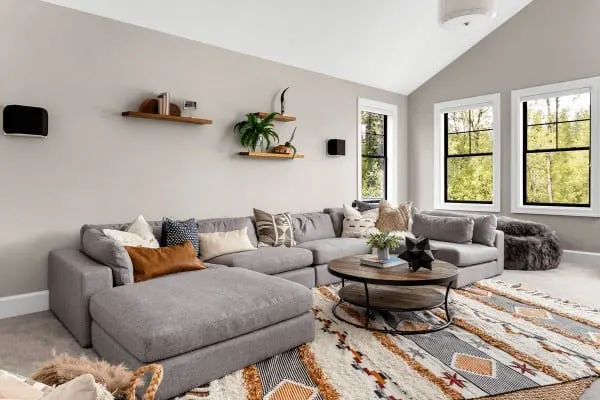
If you have vinyl plank or tiled floors (or any other hard floors without insulated subfloors), it’s a good idea to use area rugs to keep the heat in the room you’re trying to warm. This shag rug is cute and cozy and surprisingly affordable.
Particularly in rooms that sit over unheated areas such as crawl spaces and garages, it’s important to have the added layer of insulation a rug brings, not to mention the cozy feeling of a soft fabric beneath your feet.
Or you can really turn up the heat and put an electric under-rug heater on the floor beneath your rug and make your winter extra cozy.
7. Change Your Furnace Filter
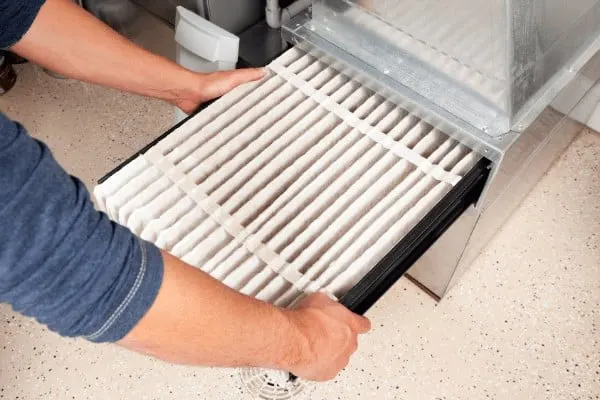
Before I knew anything about houses or how they worked (i.e. last year), we lived in a rented home that used an oil furnace as a heat source. We didn’t know anything about furnaces and we weren’t given any instructions on how to care for one, so we just didn’t. We just let it be.
For four years.
When we were moving out, a serviceman came to check on the heating system. He took out the filter and it was so filthy, I didn’t even know what to say.
It was only after we took all our stuff out of the crawl space that I realized there was a big box of furnace filters there…probably waiting for some smart person to change them once in a while.
But please let my foolishness save you some trouble.
If you have a furnace, you need to change the filter. Like every two to four months.
This will make your home cleaner, purify your air, and maximize the efficiency of your heating system.
Now we know!
Other Ways to Keep Warm In Winter
Okay, so now that we have your house sorted out, let’s talk about some of the lifestyle things you can do to stay warmer in winter.
There are lots of tricks you can use to make your home warm and cozy, even when it’s freezing outside.
8. Dress for the Cold

Our family has recently become experts in wool underlayers. My husband has a condition that is brought on by changes in temperature, particularly cold temperatures, so he has had to learn to keep his body warm at all times, even in the middle of winter.
Thermal underwear, worn under layers of clothes, and thick socks hold your body’s own natural heat. Lose the synthetic fabrics and wear cotton and wool, which will keep you warm as it allows your skin to breathe.
After investing in tons of warm clothing and footwear, he’s finally cracked the code for keeping his body at a consistent temperature.
Here are a few of his go-to items. Wearing these items around the house underneath your regular clothes is a sure way to stay warm and toasty without cranking up the heat. They are a bit of an upfront investment, but in the long run, this is one of the cheapest ways to stay warm.
- Heated Socks
- Merino Wool Socks
- Base Layer 100% Merino Wool Thermal Pants
- Base Layer 100% Merino Wool Lightweight Thermal Shirt
- Allbirds wool sneakers
9. Be Active to Generate Heat
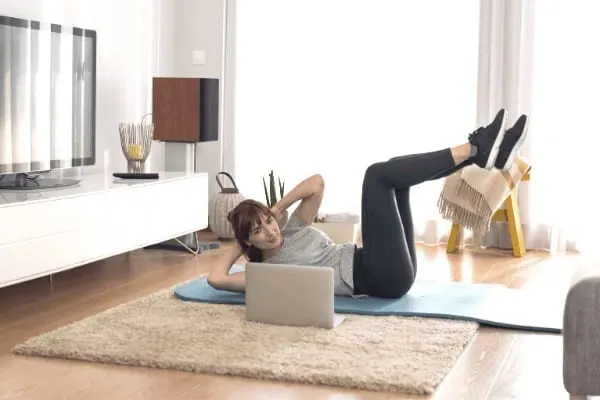
This is no time to sit huddled in a shivering ball; this is a time for activities that generate more heat.
Cleaning the house or aerobic exercises will do the job nicely. Doing the laundry will add some heat to the house and warm your hands as you fold it fresh from the dryer.
10. Food for Fuel

Steaming cups of coffee, tea, or hot chocolate, served with a hot bowl of soup can help chase away the chill.
A cold wintry day is perfect for baking cookies or some fresh bread to serve with hot bowls of soup or chili.
Your crock-pot, as well as a busy oven, will add some heat to the kitchen and the nurturing aroma will foster a sense of well-being.
11. Staying Warm At Night

When bedtime comes, fill a sock with rice, heat it in the microwave, and tuck it under the covers at your feet. The sock will stay warm for hours and keep your feet nice and toasty.
Add warm blankets and quilts to your bed too. If you’re still chilly, you could consider using an electric blanket with an automatic shutoff option.
You might want to consider a nightcap as well. No, not a drink, though this could help warm you up, a cap to keep your body’s heat in. The head is where we lose most of our heat and a light cap will hold some of it in.
12. Use a Space Heater
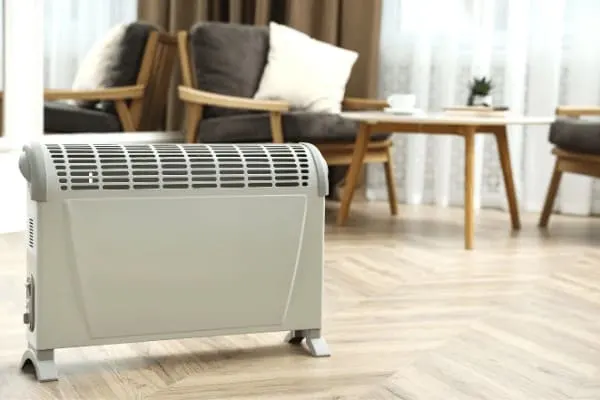
If all of the other ideas fail to keep your house warm on a winter’s day, consider an energy-efficient space heater. Especially in older homes that have oil furnaces or baseboard heating, space heaters can be a great option to keep costs down.
They also allow you to heat a single room rather than the entire home. If you spend the majority of your time in a few rooms, it makes sense to heat these rooms while allowing the rest of the house to remain a bit cooler
Kerosene or electric heaters can generate a lot of heat and use less energy. If they are used properly, they have no offensive odors or risk of fire.
Here are a few energy-efficient heaters to check out:
- Heat Storm HS-1500-PHX-WIFI Infrared Heater
- De’Longhi Mica Thermic Panel Heater
- Lasko Ceramic Portable Space Heater
Only you know your home’s weaknesses and with a little investigating, you can find the best ways to keep your house warm on a winter’s day.
Did you find this post helpful? If so, pin it for later!


Sophie Agbonkhese is a writer, homeschooling mother of four, and a recovering overachiever (who occasionally relapses). She is the founder of My Cup Runs Over, a site dedicated to helping busy women simplify and enrich their lives. When she’s not writing or debugging websites, Sophie spends her time reading, dancing, bullet journaling, reading, gardening, listening to audiobooks, and striving fruitlessly to have a clean house for at least five minutes.


